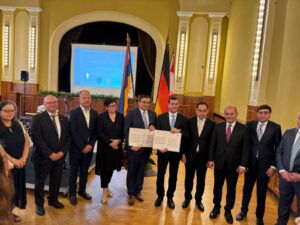By Thomas C . Nash
Special to the Mirror-Spectator
WATERTOWN, Mass. — In 2006, Ece Temelkuran published a series of articles about a trip to Armenia — her first — in which she hoped her Turkish readers would join her in learning to understand their neighbors.
As she recounted to an audience at an event sponsored by Friends of Hrant Dink at the Watertown Public Library last Thursday, the reaction to the series was less than positive.
“One of the e-mails said, ‘How dare you, woman? How dare you make them look like human beings?’”
Temelkuran said the response only further illustrated her editor’s point: that most Turks lacked even a basic knowledge of Armenians after decades of nationalism erased nearly all traces of shared history.
The editor, Hrant Dink, then sent her on a trip to France to interview members of the Armenian Diaspora. More hate mail came, and Dink asked if she would consider writing more about the divide between Turks and Armenians.







